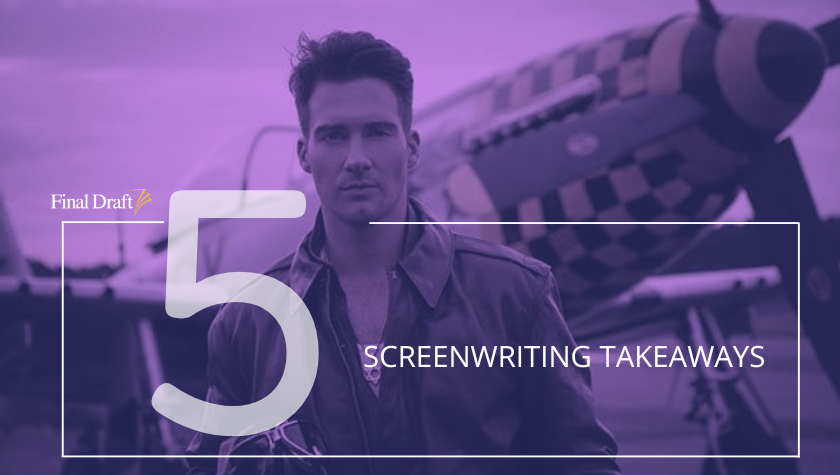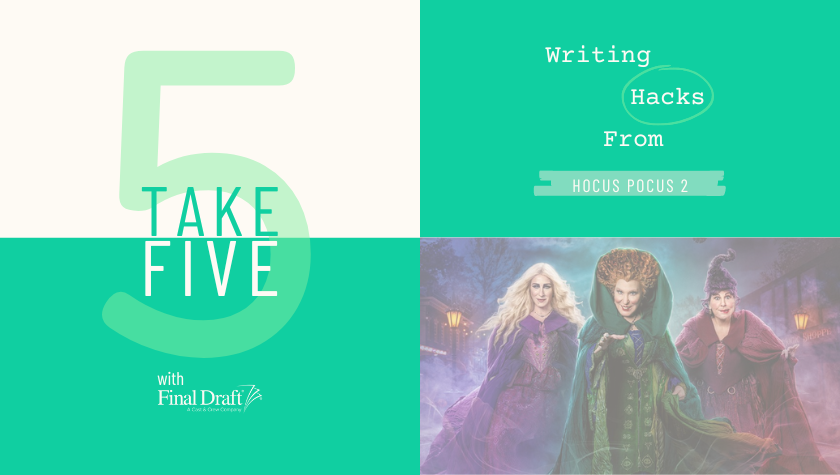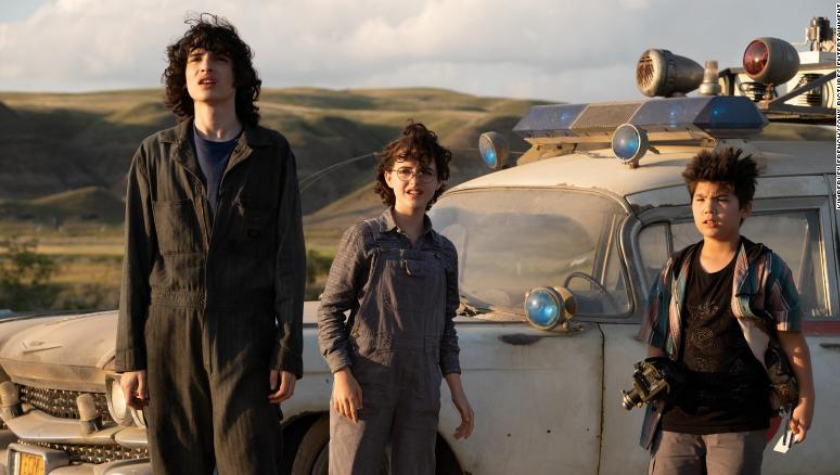5 Screenwriting Takeaways: 'Top Gun: Maverick'
June 3, 2022
After years of struggling to find the right formulas to create new content embracing the nostalgia for the 1980s, there now continues to be a flow of quality films and TV shows based on the intellectual property (IP) of 30-40 years ago. Over the last few years, we’ve seen everything from Cobra Kai (based on The Karate Kid), Ghostbusters: Afterlife from the son of the original’s director, and now there is Top Gun: Maverick - 36 years after the best recruitment tool for the U.S. Navy hit theaters.
Much has changed since the release of the 1986 classic summer blockbuster both on-screen and off, and it was these transformations that help provide context to the overall story.
The original Top Gun was written by Jim Cash and Jack Epps Jr. based on an article by Ehud Yonay and directed by Tony Scott.
Top Gun: Maverick was written by Ehren Kruger, Eric Warren Singer and Christopher McQuarrie, based on a story by Peter Craig and Justin Marks. It was directed by Joseph Kosinski.
Here are your 5 screenwriting takeaways from Top Gun: Maverick.
1. The importance of nostalgia
Although not based on any previous IP, Stranger Things is aimed toward the children of the 1980s who watched movies like E.T. the Extra-Terrestrial and Stand By Me; movies about kids roaming around on their own and finding themselves in adventures while learning something about themselves along the way.
Writers must not sprinkle in their awareness of this time period just for show. Nostalgia must be part of the story and there is a lot of nostalgia for this time. Top Gun: Maverick is a great example of nostalgia done right (although Ghostbusters: Afterlife is the reigning champ of this).
The first scene of the movie is a near copy of the first scene of the original and while it leaves older audiences grinning as Kenny Loggins' iconic song "Danger Zone" plays over the flying jets, there is a point to this scene as it sets up the world and characters for new audiences.
2. Making Maverick relevant almost 36 years later
There have been a considerable number of technological changes and cultural movements over the last 30+ years and the characters from the original story cannot be stuck in time. Maverick (Tom Cruise) is still a daredevil “writing checks his body can’t cash” but he’s certainly not flying F-14s. He is now a test pilot taking modern aircraft prototypes to the limit. Most importantly, he’s not a fossil who needs a lesson in how things are done nowadays.
The story focuses on Top Gun pilots who might have to engage in actual combat. Maverick, 36 years ago, was one of the last pilots to partake in dogfighting and engaging with the enemy. This gives the character relevance and shows the reality of the world over the previous decades including how few instances there have been of actual fighter engagement.
Humans aren’t static individuals so whether the sequel is one year later or 36 years later, characters must evolve.
3. Son of a Goose
Spoiler alert: Goose dies in the original Top Gun. It was a tragic event that sent Maverick into a downward spiral. Even though he was cleared of any wrongdoing, he still has a sense of responsibility for his wing man’s death. This sent two characters on different paths. Iceman (Val Kilmer) becomes a top pilot and, as we learn in the sequel, has risen to the ranks of Admiral. What started as a bitter rivalry has now become a dear friendship built on mutual respect.
Through Iceman, we can see what Maverick could have been. Through Rooster, we learn why he didn’t.
Rooster is a spitting image of his father. Everything from the mustache to the way he moves to his singing of Great Balls of Fire in a bar reminds Maverick of his dear friend. Maverick has a personal commitment to keeping Rooster safe, even at the expense of the young man’s career.
Through this relationship and having the history of Maverick and Goose in the background, there is tension in almost every scene between the two. How can Maverick send the son of his dead best friend on a nearly-suicidal mission? How can Rooster have a chance to win the exclusive spot in the mission when the man responsible for holding him back is making the decisions?
The writers recognize the near-40-year history of these two lives and use that history to build character arcs and drive the story forward.
4. Going to school
Top Gun is a movie about going to school. It’s not like Back to School, which was released the same year, Summer School (1987), or even Stand & Deliver (1988), but, it is a movie about a group of people attending school.
So is Top Gun: Maverick.
In the original, Maverick was the cocky student but in Maverick, he now must become the experienced (and still cocky) teacher. His role in the sequel is teaching pilots who are similar to himself how to dogfight.
There are similarities within the genre itself that writers can see take place in both movies, as well as other films of the genre. For instance, every classroom needs people of authority. In Top Gun, that role is filled with Charlie (Kelly McGillis), Viper (Skerritt) and Jester (Michael Ironside). Maverick is the authority in the sequel but even he answers to people above him, almost as if they were the principal or superintendents.
Even if writers aren’t creating a movie necessarily about schools, they can see how to twist a film’s premise based on an existing genre. It can even add to the notion of high concept: Speed is Die Hard on a bus. Top Gun is aviators in school to become the best fighter pilot.
5. A sequel should stand alone
If you have never seen Top Gun, will you enjoy the sequel? Hopefully, yes.
While it may reference previous film(s), a good sequel should have a story that stands on its own. Top Gun: Maverick is a great example of how a sequel can use flashbacks and subtext to enlighten the audience about what happened previously and is helping to drive the emotional conflict.
Even then, the flashbacks, while helpful, weren’t necessary. In the first scene in which the audience sees Maverick, the writers show you exactly the kind of person he is. When he meets with the admirals to accept his assignment, the exposition is there regarding Maverick’s past. The movie stands on its own — it just has the benefits of familiarity.
Top Gun: Maverick is not a cash grab or a gimmick playing off the nostalgia of the original. As a writer, you can observe how the story weaves a full narrative, complete with character arcs, all while maintaining its fun, summer blockbuster appeal.
Written by: Steven Hartman
Steven Hartman is an award-winning, optioned screenwriter. He was a Top 5 Finalist in Big Break’s Historical Category in 2019 and won Best Action/Adventure in Script Summit’s Screenplay Competition in 2021. He holds a Bachelor of Arts degree from Columbia College and had internships at Jerry Bruckheimer Films and Village Roadshow Pictures. Steve is a full-time writer and creative video producer by day and a screenwriter and novelist by night.



